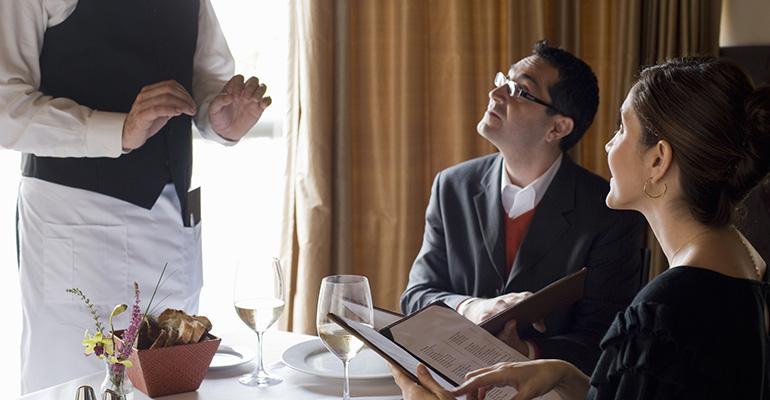Christopher Patrick is executive chef of Abacus restaurant in Dallas. This article does not necessarily reflect the opinions of the editors or management of Restaurant Hospitality.
In the last decade, Americans haven’t just changed how they eat; they’ve completely overhauled the way they think about food.
The Internet and social media have drastically altered the restaurant landscape, particularly for fine-dining establishments. Customers aren’t just hungry for hickory grilled buffalo tenderloin, they’re also eager to share their experiences on Facebook, Instagram and Yelp.
Meanwhile, young chefs are realizing that fame doesn’t come as easy as it looks on “Top Chef,” and the pool of formally trained talent is shrinking. Costs are rising and competition is high.
How can fine-dining restaurants distinguish themselves in a world of fast-casual and gourmet meals at home? Keep reading to find out.
1. Social media has changed everything. From social media to review sites, diners love sharing their restaurant experiences. Diners have easy access to menus, food education and reviews, so they are much more aware of what’s going on in the food world than in the past. Abacus uses social media to promote wine dinners and keep customers aware of events. Social platforms and review sites mean chefs and restaurants have unprecedented opportunity to hear directly from diners, which provides incredible feedback. When it comes to social media, a successful restaurant will never have a culture of “no, but,” but always “yes, and.” Social media also works both ways, letting us generate better awareness of new events, menu items and overall restaurant life.
2. Increased competition and consumer choice mean you have to work even harder. Easier access to educational resources have enabled food lovers to become self-taught gourmets, and grocery stores and meal-kit services have made it easier to make gourmet dining at home more accessible. When people can pick up sushi from the grocery store, some might not be as incentivized to go to a restaurant. But new home dining options are an opportunity, not an obstacle. Sure, you can get sushi to go, but that’s not going to cut it for special occasions, when getting dressed up and enjoying the incredible service and fine atmosphere of a fine-dining restaurant will truly commemorate a special moment. Eating over the sink or out of a plastic tub doesn’t compare to a fresh plate prepared by hand and arranged with passion and artistic flare. More consumer choices only make fine-dining more special.
3. Evolving consumer attitudes and ideals change the conversation. Consumers are more educated and ask more questions than ever, and they have definite standards. They’re more aware of what’s in their food and they demand locally grown, higher quality ingredients. Having more educated diners means those of us who are passionate about food can have incredible conversations about what excites us on the menu and how those ideas came to fruition. We can talk about who our local farmers are to people who really care. More engaged diners help great restaurants support sustainable, more healthful operations that provide better ingredients.
4. Young talent has changing aspirations and expectations. Chefs today move from concept to concept more quickly, and sometimes lose their focus on the original business. Low pay and long hours make starting positions less desirable. And since fewer technically trained chefs are available, young chefs willing to pay their dues are in high demand. Many young chefs just entering the industry have illusions of instant success, and once they realize how much hard work, sacrifice and low pay is involved in the beginning, they become discouraged and burn out. The key to building a positive culture is fostering an environment of encouragement and growth. Believe that when you invest in people, they will return the favor.
5. The cost of doing business keeps going up. Costs are always going up, whether it’s ingredients, menu prices, or the cost of living for employees. The executive chef’s goal is to create strong relationships with farmers and vendors to keep costs down, customers happy and employees paid fairly. In fine dining, you are not only selling a memorable plate, but an incredible experience. From the moment a customer walks in the door to the end of their meal, the smallest details must be perfectly executed. In today’s competitive market, those details separate a good restaurant from a great one. The key to lasting another 18 years and beyond is staying close to the experience. But the experience isn’t just within the four walls. It is online and in real time. Today’s fine-dining restaurant must always be looking forward and embracing the new technologies, techniques and talent that are right within our grasp.
Christopher Patrick is executive chef of Abacus, an award-winning Dallas restaurant serving contemporary global cuisine with Texas-sourced ingredients, game and a full sushi menu. Patrick has more than a decade of experience working in top kitchens throughout the city. He received a degree in culinary arts from the Art Institute of Dallas.





